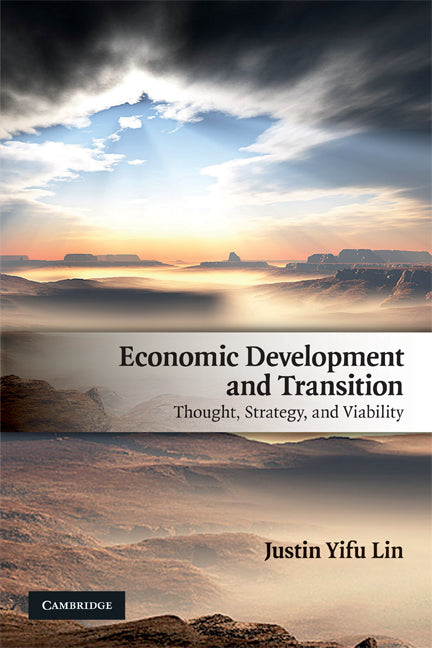Freshly Printed - allow 4 days lead
Couldn't load pickup availability
Economic Development and Transition
Thought, Strategy, and Viability
An investigation into why most developing countries have failed to exploit their economic potential by China's most renowned economist.
Justin Yifu Lin (Author)
9780521735513, Cambridge University Press
Paperback, published 12 February 2009
182 pages, 7 tables
22.3 x 15.1 x 1.1 cm, 0.3 kg
'This is a brilliant and revolutionary book explaining why some developing countries have succeeded and others failed. Lin argues that it is ideas, even more than interests, that matter. Those countries that failed attempted to modernize through a strategy of modernization focusing on heavy industry - that he characterizes as defying their comparative advantage. By contrast, governments in the successful countries (mostly in East Asia) facilitated the development of industries and the adoption of technology in a developing country following their comparative advantage determined by their endowment structure at every phase of development. Successful governments did intervene in their economy - the Washington consensus was wrong. But they did so in the right way. The World Bank is lucky to have as its Chief Economist someone willing and able to look at development with fresh eyes, free from the dogmas of the past.' Joseph Stiglitz, Nobel Laureate, Columbia University
In Economic Development and Transition, renowned development economist Justin Yifu Lin argues that economic performance in developing countries depends largely on government strategy. If the government plays a facilitating role, enabling firms to exploit the economy's comparative advantages, its economy will develop successfully. However, governments in most developing countries attempt to promote industries that go against their comparative advantages by creating various kinds of distortion to protect nonviable firms in priority industries. Failing to recognize the original intention of many distortions, most governments in transition economies attempt to eliminate those distortions without addressing firms' viability problems, causing economic performance to deteriorate in their transition process. Governments in successful transition economies adopt a pragmatic dual-track approach that encourages firms to enter sectors that were suppressed previously and gives necessary support to firms in priority industries before their viability issue is addressed.
List of figures
List of tables
1. Development, transition and divergence
2. The search for a fundamental and changeable cause of prosperity
3. Aspiration and social thought of modernization
4. Development strategy, viability and performance
5. Viability and strategies of transition
6. Development strategy and development and transition performances: empirical analysis
7. Why are East Asian economies so special? Are there any general lessons to be learned from East Asian development and transition experiences?
8. Toward a right development and transition strategy
Appendix I. Development strategy and economic institutions in developing countries
Appendix II. Data description
References
Index.
Subject Areas: Development economics & emerging economies [KCM], International economics [KCL], Economic growth [KCG], Labour economics [KCF], Economics [KC]


